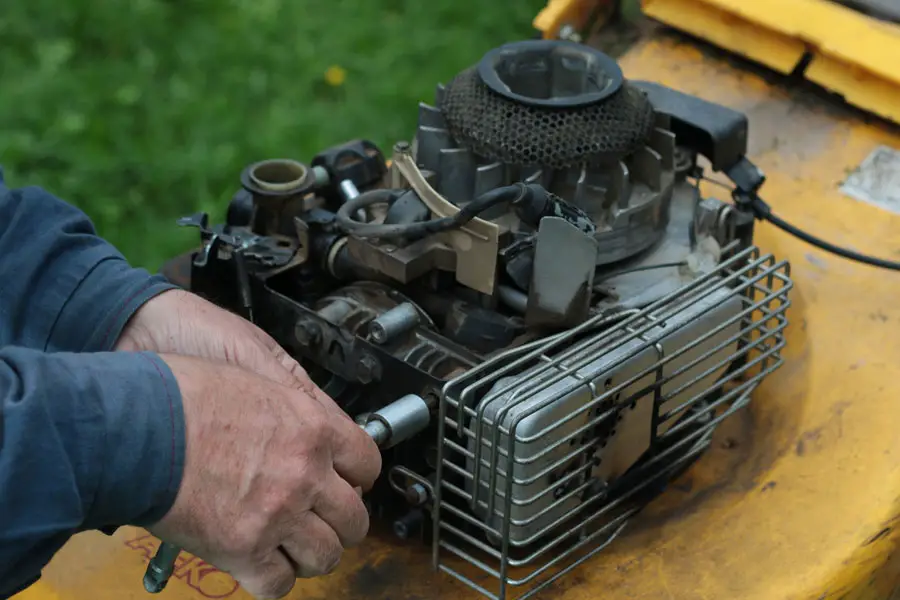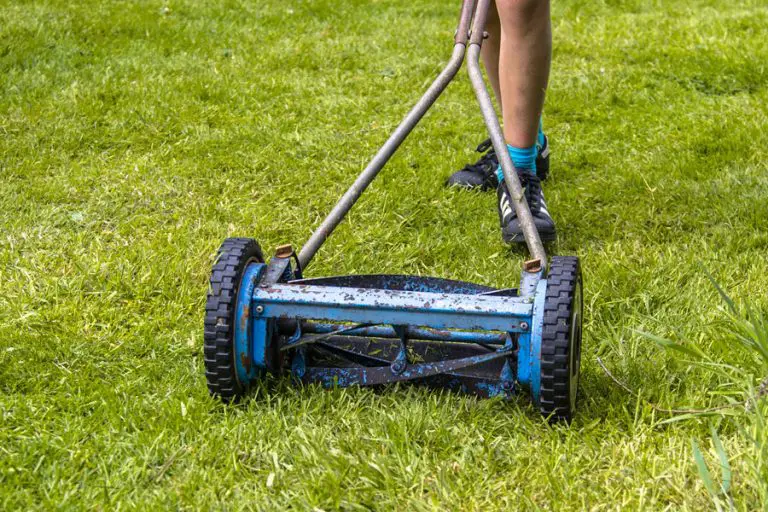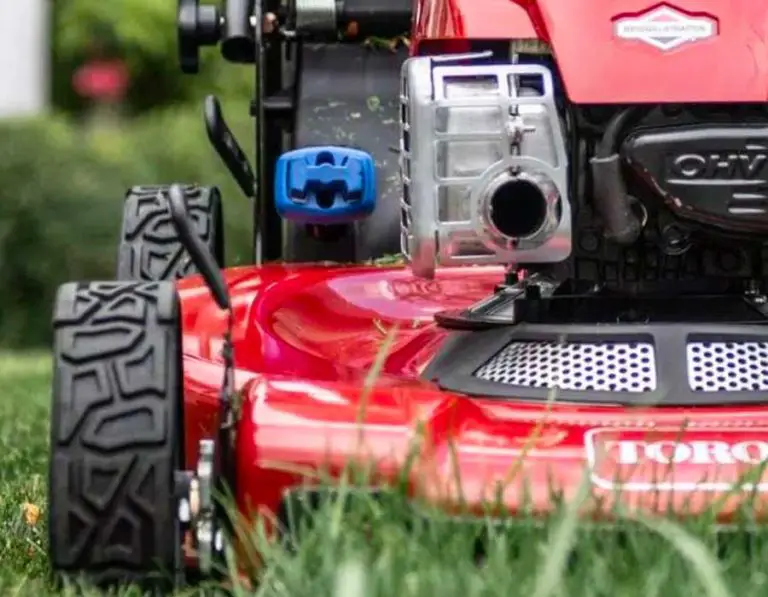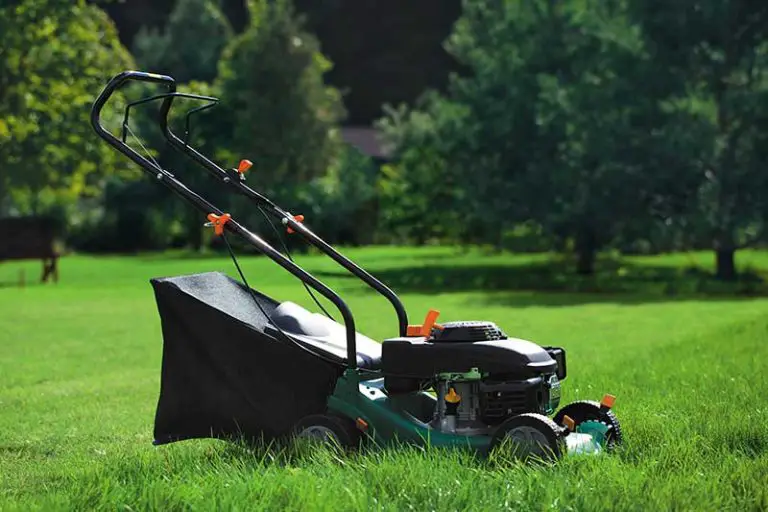How Often Should I Change my Lawn Mower Oil?
The price of oil is ever-fluctuating and often on the back of car-owners’ minds. If you own a gas lawn mower, you may also think about how often you need to change your lawn mower’s oil and how to make the most out of the supply you have.
How often your lawn mower’s oil is changed depends on a variety of factors including the type of lawn mower, the conditions that the lawn mower is stored in and how often the lawn mower is used. The best way to see when your lawn mower’s oil needs changing is by checking it each time before the lawn mower is used.
Knowing when to change your lawn mower’s oil is an important part of lawn mower maintenance, and this knowledge can help prevent damage or parts replacement in the future.
When to Change your Lawn Mower Oil
Oil inside a lawn mower is going to have a much shorter lifespan than it would do if left underground. The conditions it remains in inside the lawn mower can greatly affect its lifespan and how long it will remain useful. This can be due to the constant heating and cooling of the engine, alongside any changes in the weather.
Generally speaking, depending on the size and performance of the lawn mower, oil can last anywhere from 25 to 100 hours of operation. Be sure to consult your manual to confirm your lawn mower’s oil lifespan.
The best way to know when to change your lawn mower’s oil is by checking it each time before you mow the lawn. This can account for any temperature changes which may have left oil unusable or insufficient.
Your lawn mower’s oil is more at risk of becoming unusable after periods of heatwaves, heavy dust or wet weather. In addition to this, the terrain which your lawn mower often mows can also impact its oil usage. Uneven or particularly bumpy terrain may require more power, thus leaving your oil more likely to become unsustainable quicker.
It’s important to know the signs that your lawn mower’s oil needs changing.

The Dipstick
The dipstick is best tested after the mower has run for a minute or two. The dipstick is often located on the left side of the engine. Check what the oil level looks like visibly inside the lawn mower, and then wipe the dipstick. If there are particles or pieces of dirt rubbed off the dipstick, it may mean that the lawn mower requires an oil change.
Use Time
How much use your lawn mower has had on its current oil change could help determine whether or not it needs another change. Whilst some lawn mower models have hour meters to display use time, some models don’t come with these and it’s advised to keep track or estimate how much run time the lawn mower has had on its current oil change. Using your lawn mower for four hours a week, for example, will lead to 50 hours of use in around 3 months.
General Maintenance
Generally speaking, lawn mowers should undergo general maintenance at least once a year in order to either winterize them or sharpen their blades. Depending on your type of lawn mower, it may need maintenance more or less than this. Checking the oil before these maintenance tasks is a useful habit to get into. It’s also advised to drain the oil from a lawn mower before it is winterized to avoid any damage occurring whilst the lawn mower is out of use. This can prevent issues after the winter season, such as a failure to start up.
How to Change Lawn Mower Oil
Changing your lawn mower oil is a task that should be completed each time its current supply becomes too low.
In order to change lawn mower oil, you need several tools:
- Spark plug wrench
- Funnel
- Spanner or wrench that fits the drain plug
- An empty container for old oil
- Cinder blocks, planks of wood, or anything that can elevate your lawn mower off the ground
- Disposable gloves
If your lawn mower is reliant on oil, it’s important to know how to change it once its supply has been used. Every lawn mower is built differently, so some steps may not apply or be relevant to you. The best way to ensure that you are replacing your lawn mower’s oil correctly is by reading the manual first either physically or by finding it online.
Warm the Engine
Warming the engine up helps get the oil inside moving and is likely to dislodge any debris that may be floating inside. Keep it running for approximately 10 minutes before shutting it off again.
Turn the Mower Off
Make sure the lawn mower is completely switched off, with no way of possibly turning back on. This means disconnecting the spark plug or by making sure any auto-start systems are switched off or blocked.
Lift the Lawn Mower
The lawn mower needs to be placed in a certain position in order for the oil to be drained as easily as possible. This is also known as “tipping” the lawn mower in order to gain access to the drain plug. Once the lawn mower has been tipped, remove the fuel tank, empty it or seal the cap with a plastic bag.
Find the Drain Plug
The drain plug is usually located at the bottom of the lawn mower deck, but it varies between lawn mower manufacturers. Due to its nature, it’s often covered in grass clippings as it can sometimes be sticky due to leakage. Once you’ve located the drain plug, make sure to clean it well before draining the oil.
Draining the Oil
Remove the drain plug carefully and begin to drain the oil into the empty container. You may need to use the funnel for this step if your lawn mower doesn’t have a draining nozzle. Once drained, the drain plug can be reinstalled. Then move the drain pan underneath the filter and replace it.
Refilling the Oil
When the oil has been drained and the plug cleaned out, the new oil can be poured inside. If the mower doesn’t have a nozzle built in, you may need to use the funnel again. When refilling the oil, make sure to repeatedly test the dipstick, and also ensure that the engine isn’t overfilled.
Testing the Engine
Once the oil has been changed, you can test the engine to make sure it is running smoothly and properly. This can be done by simply reconnecting the spark plug. Run the engine for a couple of minutes before shutting it off again. Inspect the lawn mower for any potential leaks or damages. If there are none, then the lawn mower is good to go.
Maintaining Your Lawn Mower
Regular maintenance can keep your lawn mower running smoothly for many years to come. There are a couple of ways you can increase the longevity of your lawn mower, by completing simple maintenance tasks throughout the year.
Draining Gas to Prevent Issues
Issues often occur when a lawn mower is left for long periods of time without seeing any use. If a lawn mower has been left over winter with gas still inside, it could lead to issues and clogged in the system. One way to avoid this is to make sure gas is drained before the lawn mower is put into storage for a lengthy amount of time. Winterizing gardening equipment should be done at the end of the season to ensure that it will continue to work as intended once spring rolls around again.
Checking the Air Filter
The air filter is a small but integral part of a lawn mower. It helps burn gasoline and can affect the power and efficiency of your lawn mower. If the air filter is dirty, it can impact the way gasoline is burnt within the mower.
Keeping the Mower Clean
Keeping the lawn mower clean will reduce risk of clogs and other internal damage. Cleaning the deck is a fairly simple and easy job, and can be done whenever blades are disassembled for cleaning.
Sharpening the Blades
Sharpening the mower’s blades is a maintenance task that should be done yearly to prevent it from becoming burdened when cutting the grass. Sharpened blades make the cut neater, and will increase productivity by allowing the lawn mower to work faster.
Changing Spark Plugs
A mower’s spark plugs are the main connector to the power supply. A damaged or broken spark plug could prevent your mower from even turning on. Spark plugs should be checked each time the mower is used, or changed once they are becoming old and worn out.
Final Thoughts
Lawn mower oil levels and quality should be checked each time you intend on cutting your lawn. This enables you to change if needed or ensure if you can get a few more hours out of it. This should be a routine part of your lawn mower’s maintenance regime, as it can increase the longevity of your lawn mower and can prevent it from running out of oil mid-cut.





